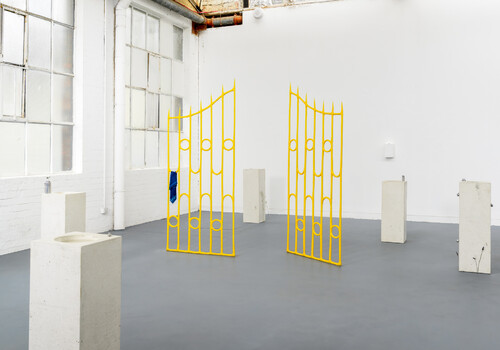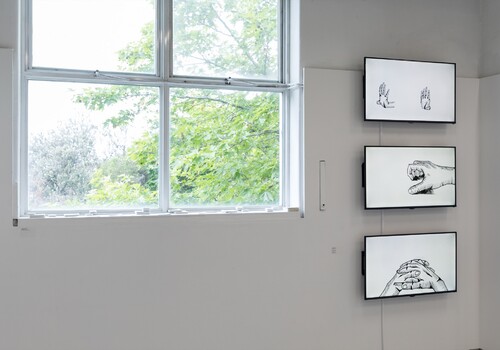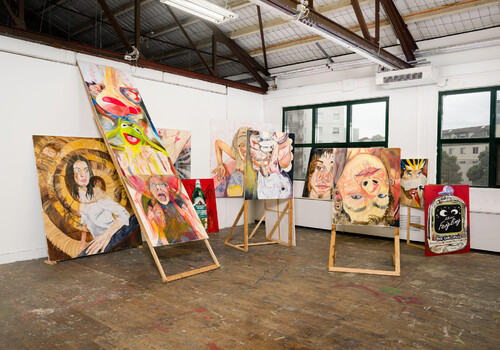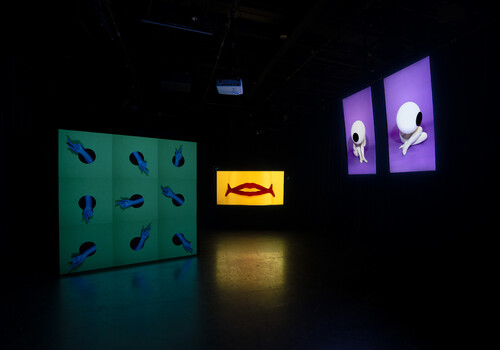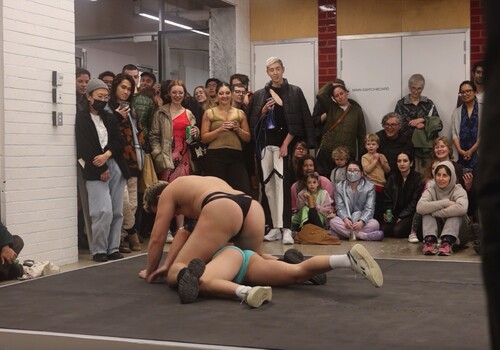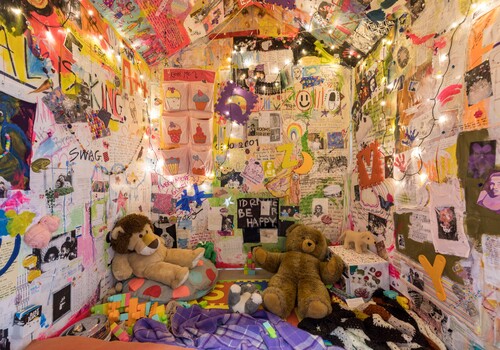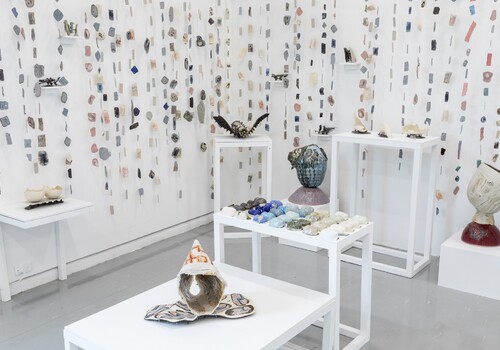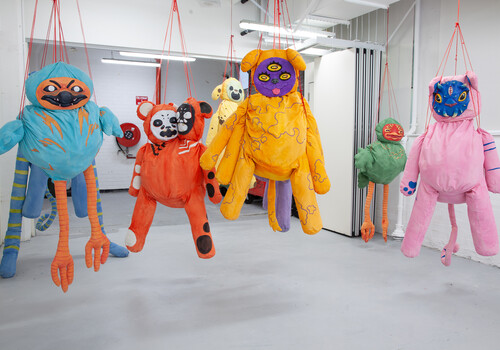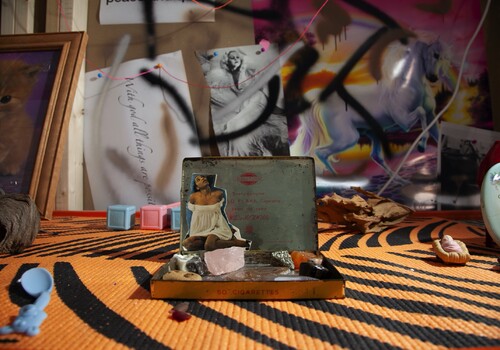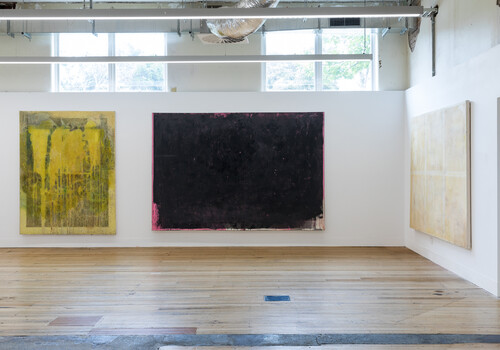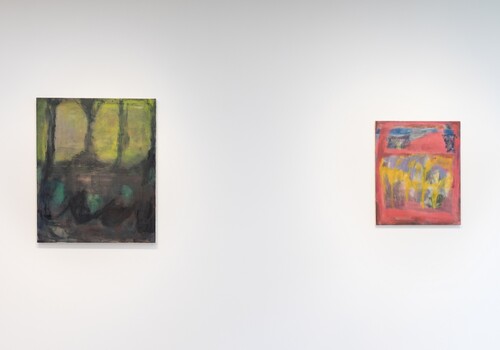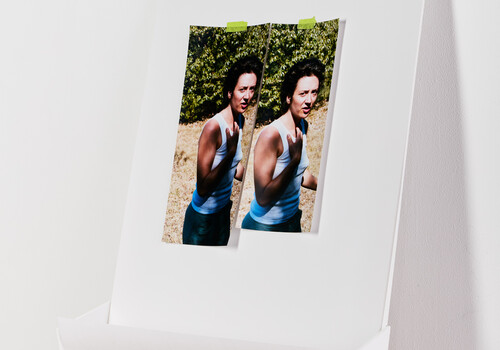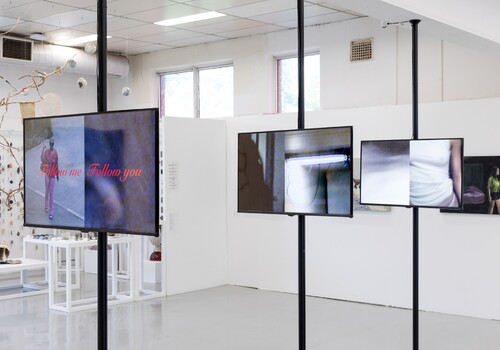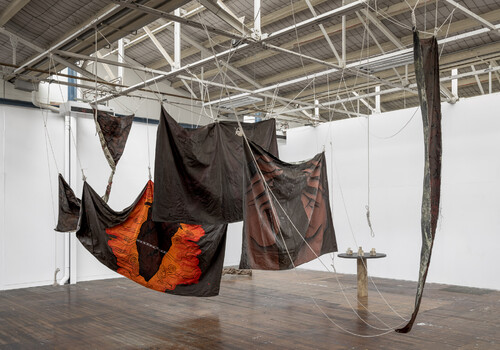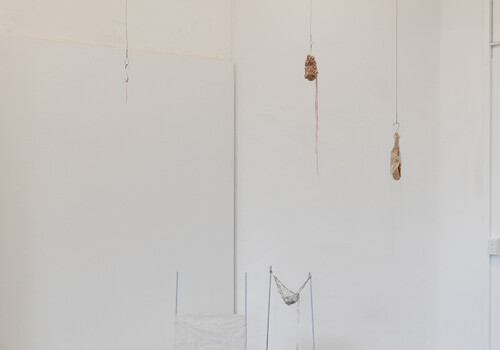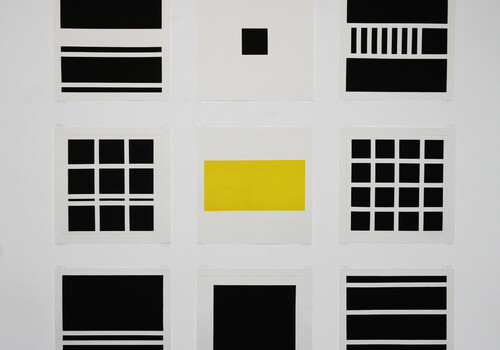Bachelor of Fine Art, MADA
By Mia Palmer-Verevis
As if pulled from the mind of Ursula Le Guin, Richard Monger’s glass-ceramic hybrids locate an abstracted ecological utopia. Heavily influenced by the beauty and imperfections of the natural world, the artist’s body of work is intimately tied to sensory experiences and close observations.
Occupying one corner of the MADA Gallery is Monger’s installation, reminiscent of a Wunderkammer display: minerals, dazzling specimens and unique discoveries from the ocean floor. Each artifact immerses the viewer in a tranquil space of muted hues and delicate fragments, with forms that are at once familiar and imagined, organic and other. The materials used in Monger’s work—glass and ceramics––are typically incompatible, posing technical challenges in the process of making, or their “FUSION”.

The work is characterised by iridescent glazes, raw edges and delicate forms, appearing like broken eggshells, beach-worn shards of glass, and filtered sunlight. A Night of Lustre with the Mother of Pearl, all 690c. Pate de Verred chapter 5, from the book of FUSION, (2022) hangs suspended from the ceiling. The three jagged semi-spheres glowing with their pearlescent glazes remind me of fragile sea urchin shells—a marine specimen with an almost alien form. Monger’s cryptic titles reference chapters from his forthcoming text ‘FUSION’, that will detail the vast complexities of cross-material experimentation.
Monger was present during my visit to MADA and gently approached me. He encourages me to “look closer” and points to a small jeweller’s loupe, which I barely notice sitting by one of the works. As I hold the magnifier to my eye, I can observe the minute composition of each lustre: intricate crystals that form a universe of their own. Reflections through Luminescence chapter 6, from the book of FUSION, (2022), Monger’s kaleidoscope sculpture, has a dark, brutal exterior, departing aesthetically from the rest of the works. When looking through the kaleidoscope’s small lens, I am transported into a world of shifting colours and brilliant tessellations. The work facilitates an imperative to look closer, redirecting attention to the vulnerable and delicate, and operating as an antidote to the fast-paced encumbrance of contemporary society.
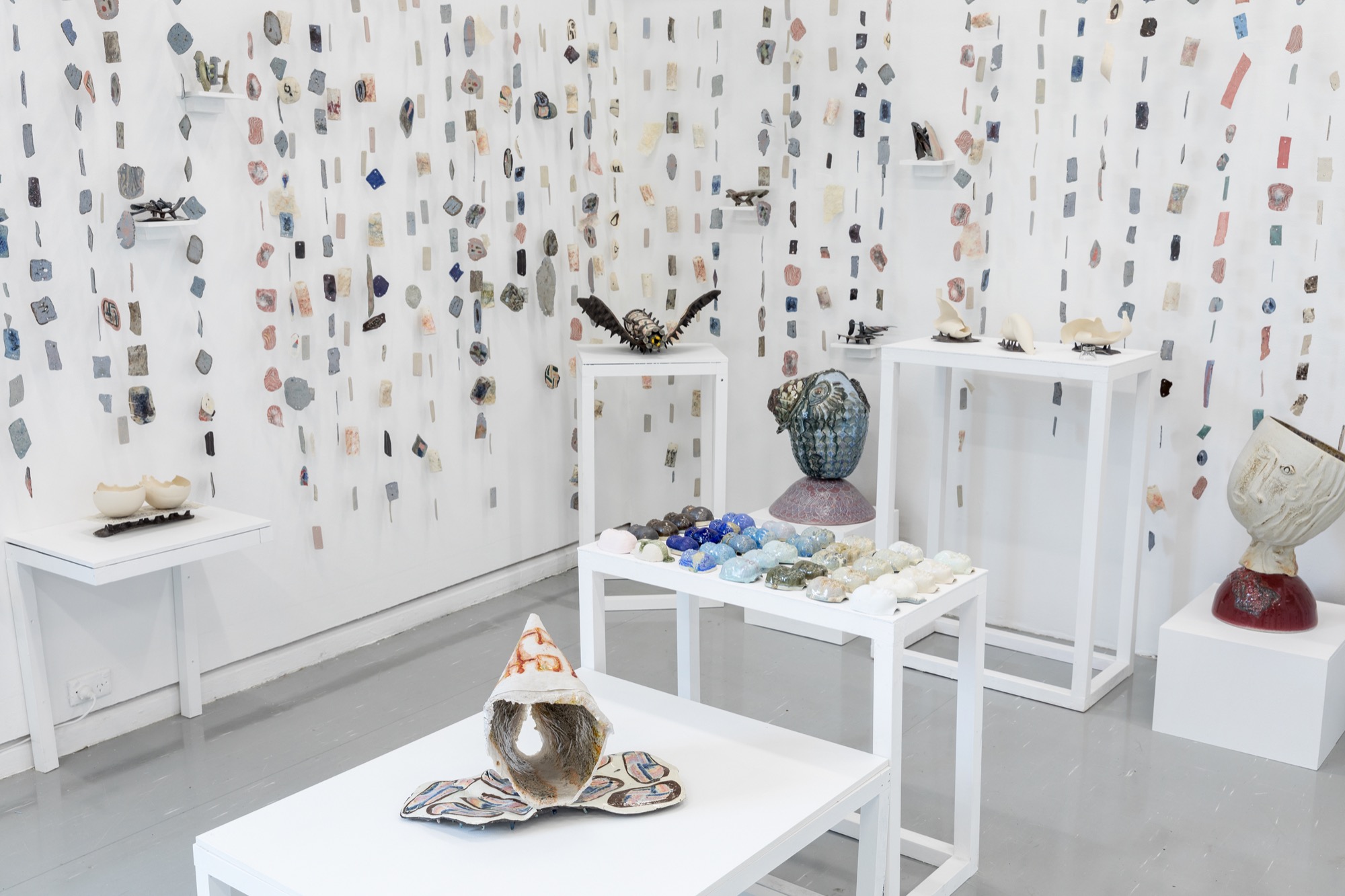
The ethereal bioluminescence of Monger’s sculptural fusions resonates with Le Guin’s The New Atlantis (1975). The short story is set in a harsh dystopia that is subject to extreme climate events; a reality that we now face forty years onwards. Imagery of environmental desolation contrasts against the lyrical, abstract prose that portrays a sublime emergence of new life through light and colour; the towers of Atlantis:
[the fallen towers] glowed in the ever-brightening radiance, not blue or blue-green, up there, but gold. Far above them lay a vast, circular trembling, brightness: the sun’s light on the surface of the sea.
Like the towers of Atlantis, Monger’s forms offer a luminous spectacle that provides relief from a near-dystopian reality.
By illustrating the spectacular outcomes of combining two traditionally incompatible materials, the work deftly unifies nature and art to retrieve one from the depths of the insistence of the everyday. I find myself sedated by the subtleties of Monger’s creations and enchanted by their fragility, compelled to look closer and escape to the new city within.
Mia Palmer-Verevis is an emerging writer and arts worker based in Naarm (Melbourne). She is currently completing her Master of Art Curatorship at the University of Melbourne and takes a particular interest in the interdisciplinary spaces between art, film, and literature.
